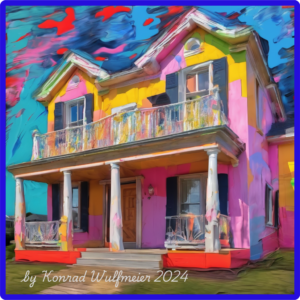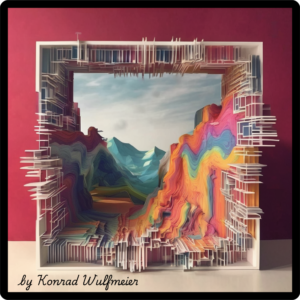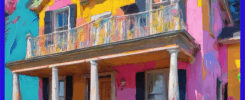Art After Architecture: Intelligence. Natural. Artificial. As Exhibition of the Future
This year’s Biennale Architettura in Venice gathers disciplines, methods, and ways of thinking under the title “Intelligence. Natural. Artificial. Collective.” that extend far beyond the traditional field of architecture. It’s about the interplay of natural, artificial, and collective intelligence — about laboratory formats, transdisciplinary research, and the question of how we might rethink our approach to technical, ecological, and social challenges. Architecture has already visibly embraced this theme; the central question for the visual arts is: When will art follow — and how?
La Biennale di Venezia
As someone who has worked for years at the intersection of nature, technology, and algorithmic image- making, I see this shift as a necessary expansion of our discourse. Digital processes, AI-supported generation, and hybrid production methods are no longer merely technical tools — they are resonant spaces where perception, intention, and materiality can be renegotiated. Digital art doesn’t just provoke aesthetically; it transforms how we experience and interact with art: it lives, reacts, transforms.
making, I see this shift as a necessary expansion of our discourse. Digital processes, AI-supported generation, and hybrid production methods are no longer merely technical tools — they are resonant spaces where perception, intention, and materiality can be renegotiated. Digital art doesn’t just provoke aesthetically; it transforms how we experience and interact with art: it lives, reacts, transforms.
This is not an abstract thesis — it’s lived practice. My works combine traditional techniques (canvas, airbrush, collage) with digitally generated image layers and natural elements; the results emerge from a dialogue in which the machine does not replace but complement. Such works have already been shown in Venice — at the ARTE VENEZIA format in 2025, the fusion of craftsmanship, natural materials, and AI was explicitly presented; it became clear how classical provenance, tactile quality, and algorithmic image-making can be coupled into new, sensual fields.
Quantum Nature Art
If the Architecture Biennale now functions as a laboratory for “Living Labs” and collaborative intelligence, it opens up multiple possibilities for the visual arts: independent biennales or satellite exhibitions, curatorial residencies, collaborations with scientific and research institutions, or cross-format showcases in cities with strong art and innovation profiles — from Basel to Milan, Cologne to Dubai. These formats should think less in terms of classic white-cube presentations and more in interactive, adaptive settings, where works respond to visitors, climate or usage data, and “grow” over the course of the exhibition. (The Architecture Biennale itself has named this transdisciplinary ambition as one of its core focuses.)
La Biennale di Venezia
Personally, I believe: the time for such exhibitions won’t be long in coming. The conditions are already in place — technically, curatorially, culturally. Museums and private initiatives are already experimenting with AI-art programs; media art festivals and art-&-science hubs are actively seeking works that build bridges between data, ecology, and sensuality.
bridges between data, ecology, and sensuality.
What’s sometimes missing is the linguistic framework that explicitly names the visual arts as partners in these debates — a framework that centers not only technology, but also ethics, origin, and aesthetic experience.
What might such an exhibition look like? A few concrete building blocks:
Living Installations: Large-scale works that respond in real time to environmental data, visitor interaction, or bio-sensor input, altering image composition and materiality.
Hybrid Presentations: Physical one-offs alongside generative editions, accompanied by documentation of the creation process (provenance, material mix, algorithmic parameters).
Residency & Research: Curatorially guided workshops where artists, developers, and scientists collaborate.
Discourse Program: Symposiums, performances, educational formats — so the exhibition not only presents but also negotiates what “intelligence” means in artistic production today.
In Conclusion:
I call myself a pioneer because I actively seek these fractures — between painting and code, between hand and sensor, between intuition and data logic. I’m curious to see when the visual arts will officially gather their major formats under the banner Intelligence. Natural. Artificial. Collective — and even more curious how diverse and contradictory those responses will be. One thing is certain: the next wave of exhibitions won’t be a mere adaptation of architecture’s answers, but will deliver their own, artistically radical responses — and I’m excited to be part of that process.
Master Code
by Konrad Wulfmeier
